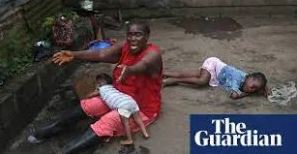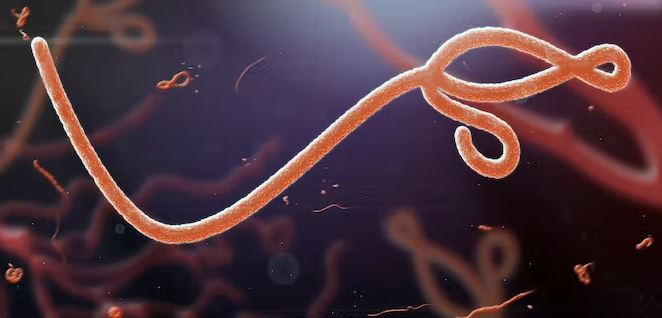Nine years ago when Ebola Virus Disease broke out in the Congo and then spread to the West African sub-region, the world appeared not to have taken notice. But when the Liberian gentleman, Patrick Sawyer, successfully imported the disease into Nigeria the world became startled.
I remember a story told by the then Head of the Nigerian Center for Disease Control. It was about the horrific tales of Ebola in Liberia and Sierra Leon.
A Teacher lived with a younger Niece of his. A classmate of his young niece felt ill while in class. The young niece and her classmate, during the short break in-between classes, briefly visited the Teacher’s apartment. The girl that was feeling ill took a little rest on the bed in that apartment. It was the Teacher’s bed. The girl had Ebola but did not know.
The Teacher never knew what transpired in his absence. He came back to his own apartment and lay on his own bed. That was all he needed to contract Ebola Virus and die. So long as Ebola was around, death was freely available!
The story of Dr Adadevoh, the heroine of the Nigerian Ebola story, was that of putting her own life on the line to restrain the man with the index case in Nigeria from hawking his wares all over the place. The doctor at that time may not have fully understood the significance of her actions to her personal safety and that of the rest of the people she shielded from death.
The Nigerian situation was also fortuitous. A case of the silver lining in the dark sky. The Resident doctors were on a National Strike. The Teaching Hospitals in Lagos were practically shut down. If it were not so, Patrick Sawyer had visited a Teaching hospital, maybe some number of healthcare staff would have been exposed and the death toll would have been much higher.
I still have the picture in my mind of the body of a Liberian doctor tossed into the back of a pickup truck for disposal. He wasn’t a doctor anymore. He was a dangerous contaminant to the living. But… just a few days earlier, he was on the front line of a war he was personally going to lose even though he, like a good soldier, preserved the life of others.
Exactly 9 weeks ago today, on the 20th of September 2022, the Ebola Virus Disease outbreak was announced in Uganda. That was the beginning of the nightmare that has befallen Uganda. Entire Districts have been quarantined and the news has been both good and bad. Good, that the disease transmission appears to have stopped in some Districts; bad, that the death toll has not disappointed in mirroring similar previous outbreaks. About 40% of infected people died. Similarly, 40% of infected Health workers died as per the latest reports. Grim reports if one considers how vulnerable healthcare systems are in weaker African economies.
The World Health Organization has published the following KEY FACTS on its site:
Ebola virus disease (EVD), formerly known as Ebola haemorrhagic fever, is a rare but severe, often fatal illness in humans.
The virus is transmitted to people from wild animals and spreads in the human population through human-to-human transmission.
The average EVD case fatality rate is around 50%. Case fatality rates have varied from 25% to 90% in past outbreaks.
Community engagement is key to successfully controlling outbreaks.
Good outbreak control relies on applying a package of interventions, namely case management, infection prevention and control practices, surveillance and contact tracing, a good laboratory service, safe and dignified burials and social mobilisation.
Vaccines to protect against Ebola have been developed and have been used to help control the spread of Ebola outbreaks in Guinea and in the Democratic Republic of the Congo (DRC).
Early supportive care with rehydration and symptomatic treatment improves survival. Two monoclonal antibodies (Inmazeb and Ebanga) were approved for the treatment of Zaire ebolavirus (Ebolavirus) infection in adults and children by the US Food and Drug Administration in late 2020.
Pregnant and breastfeeding women with Ebola should be offered early supportive care. Likewise, vaccine prevention and experimental treatment should be offered under the same conditions as for non-pregnant populations.

TRANSMISSION
All things being equal, (and they never are), Ebola Virus Disease is a zoonotic disease. With the human-to-human transmission of the virus, the dynamics have changed. Whereas the animal reservoir, bats and monkeys, remain very important in restarting disease cycles, epidemics are propelled by human-to-human transmission.
The incubation period of the virus is 2-21days, during which period the individual is unable to spread the disease. In fact, the person that is not ill does not spread the disease.
SYMPTOMS
Fever, tiredness, muscle pain, headache as well as sore throat are early symptoms and can be sudden. This is followed by vomiting, diarrhoea, skin rash and symptoms of impaired kidney function. In some cases, external and internal bleeding occurs as blood oozes from mucous membranes. Gums and mouth bleed etc. You can only imagine the toll on the mind.
DIAGNOSIS
In an epidemic, a high index of suspicion is very helpful. Diagnostic difficulties arise because Malaria, Typhoid fever, meningitis, and even pregnancy exhibit similar symptoms to Ebola Virus Disease.
Rapid Diagnostic Tests come in handy. Confirmation can be done with any of the following tests:
*antibody-capture enzyme-linked immunosorbent assay (ELISA)
*antigen-capture detection tests
*serum neutralization test
*reverse transcriptase polymerase chain reaction (RT-PCR) assay
*electron microscopy
*virus isolation by cell culture.
TREATMENT
Two monoclonal antibodies (Inmazeb and Ebanga) were approved for the treatment of Zaire ebola virus (Ebola virus) infection in adults and children by the US Food and Drug Administration in late 2020. This is in addition to supportive treatment as highlighted earlier in the WHO key facts.
Vaccines are now available for EVD namely Zabdeno, Mvabea, and Ervebo.
PREVENTION and CONTROL
This revolves around
- reducing the risk of wildlife-to-human transmission,
- reducing the risk of human-to-human transmission,
- reducing the risk of possible sexual transmission,
- outbreak containment measures,
- reducing the risk of transmission from pregnancy-related fluids and body tissues.
WHO aims to prevent Ebola outbreaks by maintaining surveillance for Ebola virus disease and supporting at-risk countries to develop preparedness plans. The problems of financing remain paramount. It would appear the global community needs to do more to address the issue of EVD considering the increasing proximity of countries to one another in the era of increased travel. The role of Telemedicine in extremely infectious diseases needs to be further explored.
We encourage active participation in community protection and personalized care.






